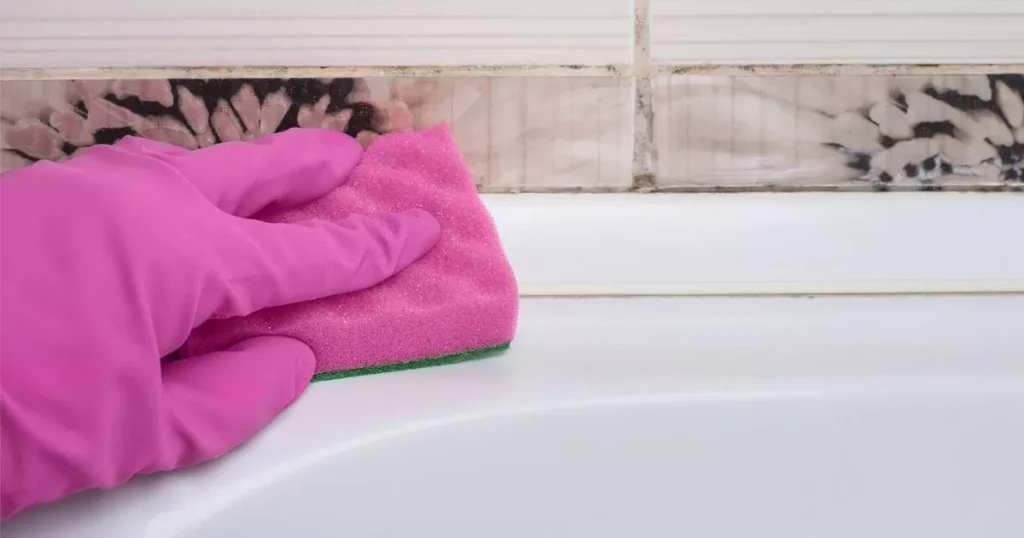Mould build-up in silicone sealants can be a frustrating problem for many households due to its persistence and difficulty in removal. However, cleaning experts have identified some common household items that can effectively tackle this issue without the need for harsh chemicals. Mould thrives in warm and humid environments like bathrooms, where spores can land on damp patches and grow. Two natural cleaners that experts recommend for removing silicone sealant mould are white vinegar and baking soda. White vinegar works as both a cleaner and a mould deterrent due to its acidity, making it impossible for mould to grow back. To use, spray the vinegar solution onto the affected area, let it sit for an hour, then wipe the surface with warm water and dry thoroughly. For stubborn mould, create a thick paste using vinegar and baking soda and leave it overnight before repeating the removal process.
In addition to white vinegar, baking soda can also be effective in removing mould from silicone sealants. Mixing baking soda with water until a thick paste forms, spreading it onto the mouldy area, and allowing it to sit for a while, followed by scrubbing with an old toothbrush and rinsing off with water, can help eliminate mould. Proper ventilation is essential to prevent mould growth in bathrooms and other rooms. Keeping these areas well-ventilated by opening a window or using an extractor fan can reduce moisture levels and discourage mould from thriving. By incorporating these natural cleaning methods and improving ventilation, households can effectively address the issue of silicone sealant mould in a cost-effective and environmentally-friendly manner.
Furthermore, the use of common household items like white vinegar and baking soda for mould removal not only helps to eliminate the problem but also prevents its return. Both white vinegar and baking soda are non-toxic, affordable alternatives to harsh chemical cleaners, making them safe for use in households with children and pets. Their natural properties and cleaning abilities make them effective choices for tackling mould while minimizing potential health risks associated with chemical-based cleaners. By choosing natural cleaning solutions like white vinegar and baking soda, households can maintain a clean and mould-free environment without compromising on safety or effectiveness.
White vinegar, in particular, contains acetic acid, a natural disinfectant that can kill off most common germs, making it a versatile and potent mould remover. Its acidity creates an environment that is inhospitable to mould growth, ensuring that the problem does not recur after treatment. By using vinegar as a regular cleaning agent in bathrooms and other areas prone to mould, households can maintain a cleaner and healthier living space. Incorporating these natural cleaners into a regular cleaning routine can effectively prevent mould build-up and promote a cleaner, more hygienic home environment for residents.
Overall, the use of natural household items like white vinegar and baking soda presents an effective and affordable solution for removing mould from silicone sealants. These common ingredients offer a safe and eco-friendly alternative to harsh chemical cleaners, making them ideal choices for households looking to tackle mould issues without compromising on safety or effectiveness. By following the recommended cleaning methods and ensuring proper ventilation in damp areas, households can effectively address and prevent mould growth, creating a cleaner and healthier living environment. With the help of these natural mould busters, households can maintain a clean and mould-free home while avoiding the negative effects of chemical-based cleaners on their health and the environment.


